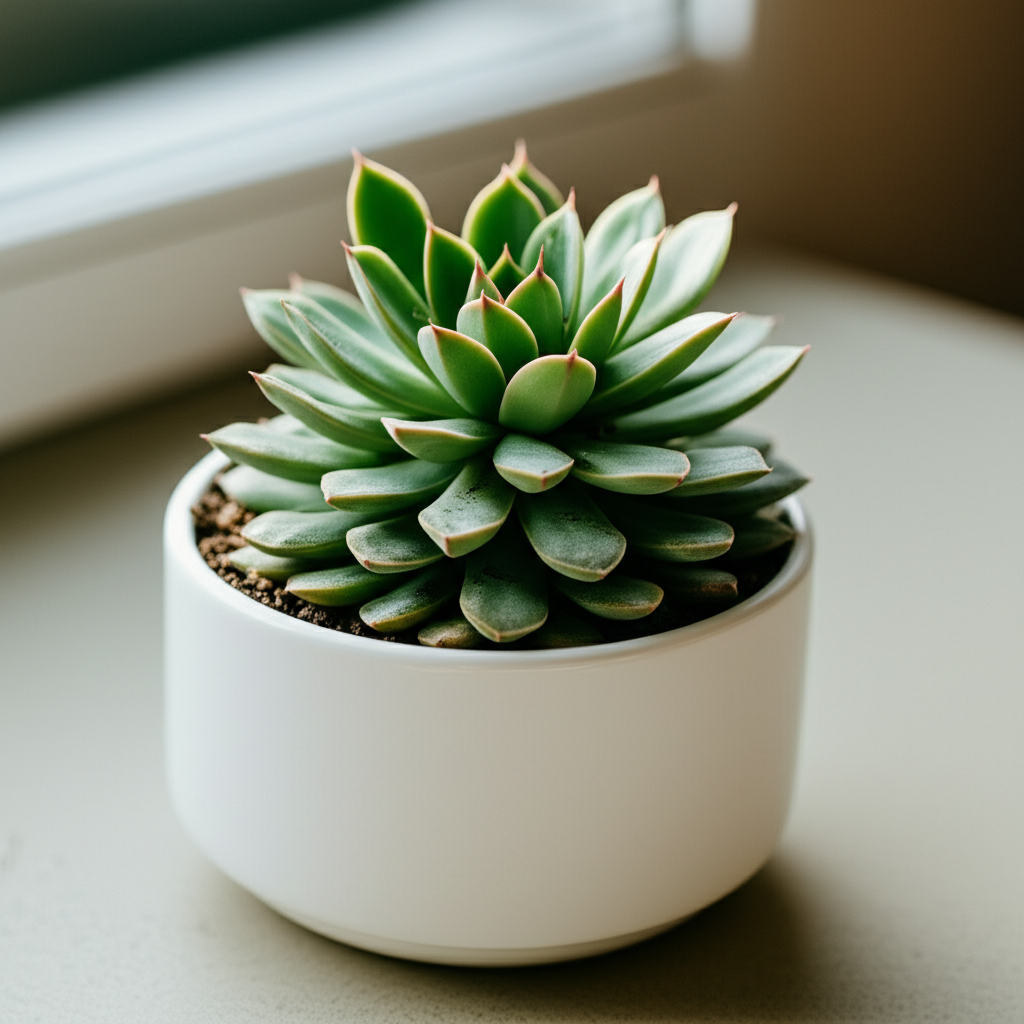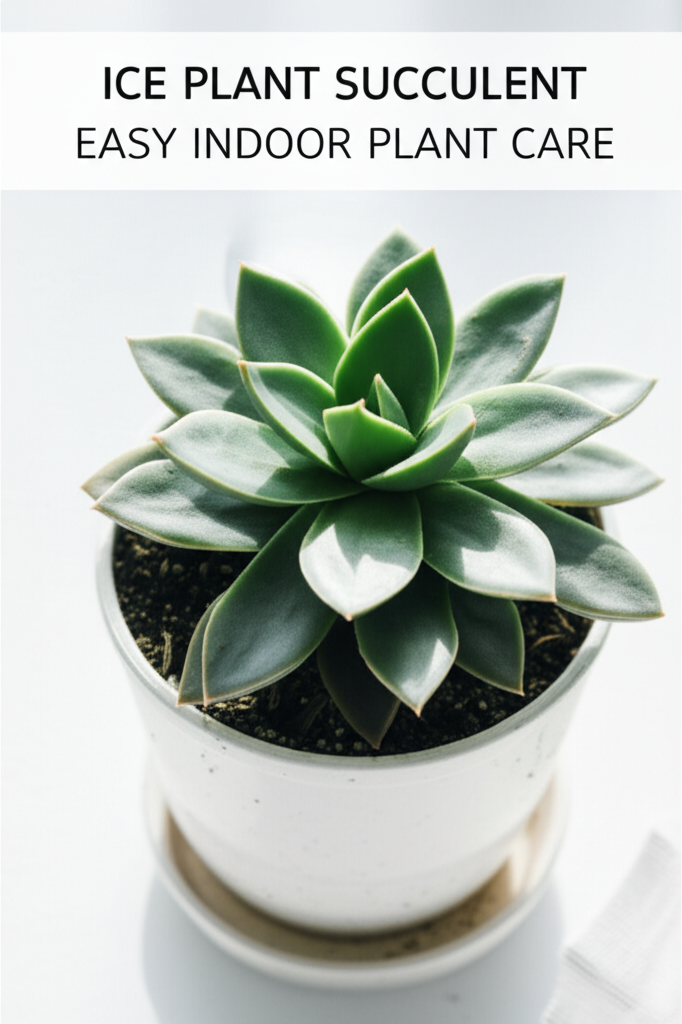Discover the Allure of the Ice Plant Succulent
The world of indoor plants is vast and varied, but few bring the unique charm and effortless beauty of the Ice Plant Succulent. With its distinctive crystalline structures and vibrant colors, this plant is a captivating addition to any home or office. Often recognized for its “ice-like” epidermal cells, which glisten and refract light, the Ice Plant Succulent, scientifically known as Lithops or Mesembryanthemum crystallinum (and various other genera within the Aizoaceae family), offers a truly captivating visual experience. These remarkable plants hail from arid regions, primarily South Africa, where they have adapted to survive extreme conditions by storing water and developing their characteristic epidermal “windows” for photosynthesis.
This article will serve as your comprehensive guide to understanding and caring for your Ice Plant Succulent, ensuring it thrives and brings a touch of desert wonder to your indoor space. We’ll delve into its origins, explore the different types, and provide clear, actionable advice on everything from watering and light to propagation and common issues. Whether you’re a seasoned plant enthusiast or a beginner looking for a low-maintenance, high-impact specimen, the Ice Plant Succulent is an excellent choice.
Understanding the Ice Plant Succulent: A Botanical Overview

The term “Ice Plant” is a common name applied to a diverse group of succulents belonging to the Aizoaceae family, which contains over 1,000 species. While Mesembryanthemum crystallinum is a well-known example, many other genera, such as Lithops, Conophytum, Fenestraria, and Pleiospilos, also fall under this umbrella and share similar care requirements. These plants are renowned for their incredible ability to mimic their surroundings, often resembling pebbles or stones, a strategy that helps them avoid being eaten by herbivores in their native habitats.
Key Characteristics and Adaptations
What sets Ice Plant Succulents apart is their fascinating morphology and physiological adaptations:
- Epidermal Windows: Many species possess translucent areas on their leaves, known as “windows.” These allow sunlight to penetrate the inner tissues, enabling photosynthesis even when the plant is mostly buried or covered by sand.
- Water Storage: Their fleshy leaves are adept at storing water, a crucial adaptation for surviving long periods of drought.
- Camouflage: Their pebble-like appearance provides excellent camouflage, making them difficult for predators to locate.
- Blooming: Despite their modest appearance, many Ice Plant Succulents produce surprisingly beautiful and often daisy-like flowers, usually in vibrant colors.
Popular Varieties for Indoor Cultivation
While the family is extensive, a few types are particularly popular for indoor gardening:
- Living Stones (Lithops): Perhaps the most famous, Lithops species are the ultimate in camouflage, often appearing as pairs of rounded, fused leaves. They produce striking flowers that emerge from the fissure between the leaves.
- Maltese Cross (Lychnopsis): Known for its small, segmented leaves and bright red or pink flowers.
- Baby’s Toes (Fenestraria rhopalophylla): Features cylindrical, translucent leaf tips that resemble tiny toes.
- Split Rock Succulent (Pleiospilos nelii): Resembles a cracked boulder with its thick, triangular leaves.
Caring for Your Ice Plant Succulent: A Simple Guide
The beauty of the Ice Plant Succulent lies in its adaptability and relatively low maintenance needs. By mimicking their natural arid environment, you can ensure your plant thrives.
Light Requirements: The Sunshine Lover
Ice Plant Succulents absolutely adore bright light. They need at least 6-8 hours of direct sunlight per day.
- Ideal Location: A south-facing window is typically the best spot in the Northern Hemisphere, providing the most intense and consistent sunlight.
- Acclimatization: If your plant has been in lower light conditions, gradually introduce it to brighter light to prevent sunburn. Start with a few hours of direct sun and increase over a week or two.
- Signs of Insufficient Light: Etiolation (stretching and becoming leggy) or dull, pale coloration indicates a need for more light.
Watering: The Art of Restraint
Overwatering is the most common mistake made with succulents, and Ice Plants are no exception. Their water storage capabilities mean they prefer to dry out completely between waterings.
- When to Water: Water only when the soil is completely dry to the touch. This might be every 2-4 weeks, depending on the season, humidity, and pot size.
- How to Water: Water thoroughly until water drains from the bottom of the pot. Avoid getting water on the leaves, especially the “windows,” as this can lead to rot.
- Dormancy Periods: Many Ice Plant Succulents have dormant periods, often in the summer or winter, during which they require even less water. Observe your plant for signs of dormancy (e.g., reduced growth, slight shriveling) and adjust watering accordingly.
Soil and Potting: Drainage is Key
Excellent drainage is paramount for Ice Plant Succulents. They cannot tolerate sitting in wet soil, which quickly leads to root rot.
- Soil Mix: Use a well-draining succulent or cactus potting mix. You can create your own by mixing equal parts potting soil, coarse sand, and perlite or pumice.
- Pot Selection: Choose pots with drainage holes. Terracotta pots are excellent as they are porous and allow the soil to dry out more quickly.
- Repotting: Repot only when the plant has outgrown its container or if the soil has become compacted, typically every 2-3 years. Repot in the spring before the active growing season begins.
Temperature and Humidity: Mimicking Their Native Climate
Ice Plant Succulents are adaptable to average home temperatures but do best in conditions that mimic their arid origins.
- Temperature: They prefer warm temperatures during their growing season (spring and summer), ideally between 65-80°F (18-27°C). In winter, cooler temperatures around 50-60°F (10-15°C) can encourage flowering and are beneficial for dormancy.
- Humidity: Low humidity is ideal. Avoid placing them in humid areas like bathrooms, as this can increase the risk of fungal diseases.
Fertilizing: Less is More
Succulents generally do not require much fertilizer, and Ice Plants are no exception.
- Frequency: Feed only during the active growing season (spring and summer) once or twice with a diluted, balanced liquid fertilizer (e.g., 10-10-10) or a specialized succulent fertilizer.
- Strength: Use fertilizer at half or quarter strength of the recommended dosage.
- Avoid in Dormancy: Never fertilize during their dormant period.
Propagation: Creating More of These Wonders
Propagating Ice Plant Succulents is a rewarding way to expand your collection. The most common methods are through seeds and leaf cuttings.
From Seeds
Growing Ice Plants from seed can be a bit more challenging but offers the satisfaction of nurturing a plant from its very beginning.
- Sowing: Sow seeds on the surface of a well-draining seed-starting mix. Do not bury them, as they need light to germinate.
- Light: Provide bright, indirect light.
- Watering: Keep the soil consistently moist but not waterlogged. A spray bottle is useful for this.
- Germination: Germination can be slow and erratic, sometimes taking weeks or months.
- Care: Once seedlings appear, treat them as mature plants, ensuring good drainage and bright light.
From Leaf Cuttings
This is a more accessible method for many popular Ice Plant varieties.
- Taking Cuttings: Carefully remove a healthy leaf from the parent plant. Ensure you get a clean break at the stem.
- Callusing: Allow the cut end of the leaf to dry and callus over for a few days in a dry, shaded spot. This prevents rot.
- Planting: Place the callused end into a pot filled with a well-draining succulent mix. You can stand the leaf upright or lay it on its side.
- Rooting: Keep the soil slightly moist but not wet. Roots will typically form within a few weeks to a couple of months.
- New Growth: Once a new plantlet emerges, you can begin to treat it as a young succulent.
Troubleshooting Common Issues
While resilient, Ice Plant Succulents can encounter problems if their needs aren’t met.
Root Rot: The Silent Killer
The most frequent issue, root rot, is almost always caused by overwatering and poor drainage.
- Symptoms: Mushy, yellowing leaves, a soft stem base, and a general wilting appearance, even with wet soil.
- Treatment: If caught early, remove the plant from its pot, trim away any rotted roots (they will be black and mushy), and repot in fresh, dry, well-draining soil. Water sparingly. In severe cases, the plant may be unsalvageable.
Pests: Vigilance is Key
Ice Plant Succulents are generally pest-resistant, but they can occasionally be affected by common houseplant pests.
- Common Pests: Mealybugs and spider mites are the most likely culprits.
- Identification: Mealybugs appear as white, cottony masses, while spider mites create fine webbing.
- Treatment: Treat infestations by wiping the pests away with a cotton swab dipped in rubbing alcohol or by using an insecticidal soap or neem oil solution. Isolate affected plants to prevent spreading.
Sunburn: Too Much of a Good Thing
While they love sun, sudden exposure to intense, direct sunlight can cause damage.
- Symptoms: White or brown scorched patches on the leaves.
- Prevention: Acclimate plants gradually to higher light levels. If sunburn occurs, move the plant to a spot with bright, indirect light until the damaged leaves recover or new growth appears.
Key Facts and Comparison
To summarize the essential care points, here’s a quick reference table.
| Factor | Ideal Conditions | Signs of Problems |
|---|---|---|
| Light | 6-8+ hours direct sunlight | Etiolation, pale leaves (too little); scorched patches (too much, sudden exposure) |
| Watering | Allow soil to dry completely between waterings | Mushy, yellowing leaves, root rot (overwatering) |
| Soil | Well-draining succulent/cactus mix | Waterlogged soil, root rot (poor drainage) |
| Temperature | 65-80°F (growing), 50-60°F (dormant) | Frost damage (too cold); stress at extreme heat without water |
| Fertilizer | Diluted, balanced fertilizer (spring/summer only) | Leaf burn, weak growth (over-fertilizing) |
Pros and Cons of Growing Ice Plant Succulents
Understanding the advantages and disadvantages can help you decide if these plants are the right fit for your home.
| Pros | Cons |
|---|---|
| Extremely low maintenance | Require very bright light, can be sensitive to overwatering |
| Drought tolerant | Slow-growing for some varieties |
| Unique, sculptural appearance | Can be susceptible to root rot if drainage is poor |
| Striking blooms on many varieties | Some species are more sensitive than others |
| Excellent for beginners | Propagating from seed can be challenging |
Embrace the Unique Beauty of Your Ice Plant
The Ice Plant Succulent offers a captivating and accessible way to bring a touch of the desert’s resilience and beauty into your home. With their extraordinary adaptations, striking appearances, and relatively simple care needs, they are a testament to nature’s ingenuity. By providing them with plenty of light, minimal water, and excellent drainage, you’ll be rewarded with a truly unique and stunning living sculpture. Enjoy the subtle shimmer of their epidermal cells and the occasional burst of vibrant color from their blooms, and watch your Ice Plant Succulent become a cherished part of your indoor botanical collection.


